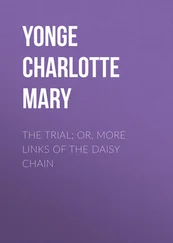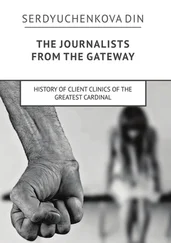Three days later he was convicted, excommunicated again, and – after another tearful display of genuflecting remorse – formally readmitted to the Church for a second time. Later that morning, he went to the secular court in order to receive his death sentence, and delivered a second public confession at the request of Pierre de l’Hôpital, the senior judge. De l’Hôpital advised him that his shame in this world would precisely alleviate the punishment he was owed in the next, and although there is little indication that Gilles was anticipating much divine retribution, de l’Hôpital was impressed by his contrition. So much so, indeed, that he granted him the greatest boon he could have extended. After pronouncing that Gilles was to be hanged and then burned, he specified that his corpse should be merely ‘embraced’ by the flames – in order that it could then be interred in Gilles’s church of choice.
Gilles, given one last night to make his peace with God, offered a final display of atonement, fifteenth-century style, at the gallows the next morning. Barefoot and clad in white, he exhorted the two servants who had helped him to throttle, disembowel, and sodomize unnumbered children to be strong in the face of temptation. He bade them au revoir instead of adieu , assuring them that their souls would be reunited at the moment of death, because no sin was unforgivable ‘so long as the sinner felt profound regret and great contrition of heart’. All were then hanged and the servants’ bodies, in keeping with their humble stations, were reduced to ashes. Gilles’s corpse, lightly singed, was borne away by assorted ecclesiastics and aristocrats for its honourable burial at Nantes Cathedral.
Gilles’s confidence might strike modern readers as bizarre, repulsive, or even blasphemous, but the scribes and judges who heard him were not just satisfied, but touched, by the piety they detected. A conventional explanation nowadays for their attitude would be that, just as the era was typified by a concern that sinners display signs of their shame, the inquisitorial system regarded the utterance of regret rather than inner remorse as the way to expiate guilt. That assertion does not, however, go very far. It was well-established Catholic doctrine by the fifteenth century that confessions were invalid unless accompanied by contrition, and the trial record itself indicates that at least some of Gilles’s judges wanted insights as well as words. While the witness statements were being taken, he was asked twice if he wanted to ‘justify’ his actions, or set out his ‘motives’, and at the time of Gilles’s first admissions in his prison cell, a particularly telling exchange took place. Pierre de l’Hôpital, Nantes’s senior secular judge, asked him at one point to say who had incited and taught him his crimes. Inquisitors routinely asked the question in the hope of identifying accomplices, but de l’Hôpital was after more than names. When Gilles replied that he had been ‘following his own feelings, solely for his pleasure and carnal delight’, the judge did not only express surprise, but also pressed on. He wanted to know ‘from what motives, with what intent, and to what ends’ the murders and sexual abuse had occurred. An explanation, he urged, would allow Gilles ‘to disburden his conscience, which most likely was accusing him’. The remark inspired indignation. ‘Alas!’ snapped the nobleman. ‘You are tormenting yourself, and me as well.’ The judge fired back that he was not tormenting himself, but wanted to know the ‘absolute truth’, whereupon Gilles brought the exchange to an abrupt end with a bare assurance that, ‘Truly, there was no other cause, no other end nor intention.’ Even de l’Hôpital was ultimately sufficiently impressed to grant his prisoner the privilege of a mere toasting, but he seems to have been struggling with ideas that are now as common as they were then inchoate: that defendants can reliably reveal their motivations, and that guilt should be measured by their willingness to do so.
The exchange also exemplifies another feature of the modern trial: the way in which it attempts to reconcile those being judged with those doing the judging, and the extent to which that attempt is so often doomed. No matter how much a criminal may want to explain, a court long to understand, and a grieving relative hope for resolution, the gap in most serious cases is all but unbridgeable. The most obvious reason is that no crime can be undone, but another is that no explanation can ever adequately pin down why one person breaks the rules and another does not. The excuses most commonly heard today – whether social deprivation, mental retardation, or pre-menstrual tension – are inherently no more plausible than Gilles’s claim that his murders were the fault of Satan, a wild childhood, and a predilection for mulled wine. Making the leap of imagination to empathize with a criminal is of course easy if one sympathizes with the crime concerned, but the mentality of someone who, say, dedicated a chapel to martyred children while slaughtering real ones is, for most people, about as unreachable as another mind can be. In such cases, the assessment that resonates truest to modern ears is one that Gilles gave long before his trial. He told a servant that he had been born under a star such that ‘nobody could know or understand the anomalies or illicit acts of which [I am] guilty’. And it explains nothing at all.
The concern to hear confessions was not the only feature of the Church’s battle against heresy that found permanent expression in the secular legal system of France. The country’s courts also became increasingly secret, just as the tribunals of the papal inquisitors had in the early thirteenth century. Inquisitorial judges opened their doors only when they were ready to present to the public the spectacle of a confessing defendant or, as happened rather more rarely, the mercy of the sovereign. By the close of the fifteenth century, they were interviewing witnesses in the absence of everyone but their clerks. Defendants meanwhile languished in custody except when it became necessary to confront them with their accusers or torture them; and defence lawyers, always rare, were formally excluded in 1539 from most stages of a trial, and absolutely barred in all capital cases after 1670.
Excluding the unlettered and the unwashed undoubtedly appealed to many lawyers then for the same reasons that secrecy still does to many people with power; but there was one notable critic. A judge from Angers called Pierre Ayrault, whose writings would influence generations of French lawyers, wrote a long work specifically on the topic in 1588, in which he complained that French justice had become like ‘a sacred mystery that is communicated only to the priest’. Its secrecy, which had been adopted out of ‘fear of the uproar, shouting and cheering that people ordinarily indulge in’, was a recipe for incompetence and error. Statements obtained during closed interrogations reflected the preconceptions of the legal official taking them rather than the meaning of the person being interviewed. Public trials, on the other hand, would serve to display the law at its most majestic. They would also make it more likely that a judge’s rulings were honest and reasoned.
The critique, developed at a time when political concepts like freedom of information and checks and balances still lay some distance in the future, was a perceptive one. The inquisitorial process, by concealing its officials from scrutiny, was inherently prone to corruption. The pernicious nature of the secrecy was, however, greater than Ayrault himself knew, for it could cloud the vision of even its greatest critic.
In August 1598, he was called upon to try a dishevelled and longhaired beggar in his mid-thirties called Jacques Roulet. Roulet had been handed into custody by one Symphorien Damon, whose statement set out how he had come to be arrested. Damon’s suspicions had been aroused when he saw the man lying on his stomach in a field for, upon being challenged, Roulet had stared at him malevolently and run away. He had seen him again shortly thereafter, alongside the mutilated body of a young boy and in the custody of four villagers. Everything else that Damon reported came from those four men; and if they ever testified, their evidence has been lost. He recounted how the peasants (one of whom was the dead child’s father) claimed to have chanced upon the body as it was being eaten by two wolves, and then to have spotted Roulet as they were chasing the beasts away. The coincidence had struck them as sinister, and their hunch was soon confirmed. Asked what he was doing, the beggar had said, ‘Not much’, but when they demanded that he reveal who had eaten the child, he had apparently confessed that he, his father, and his cousin had all been responsible. They had been wolves at the time. According to Damon, Roulet had even had long nails and bloody hands when arrested.
Читать дальше
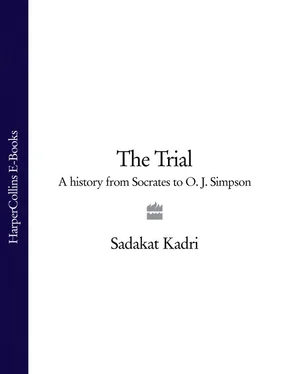
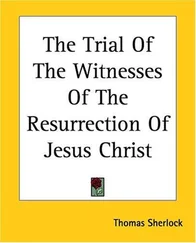
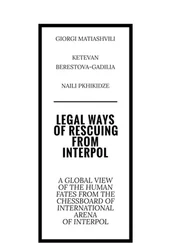
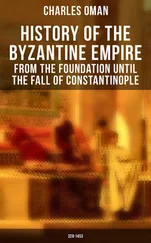
![Theresa Cheung - The Dream Dictionary from A to Z [Revised edition] - The Ultimate A–Z to Interpret the Secrets of Your Dreams](/books/692092/theresa-cheung-the-dream-dictionary-from-a-to-z-r-thumb.webp)





